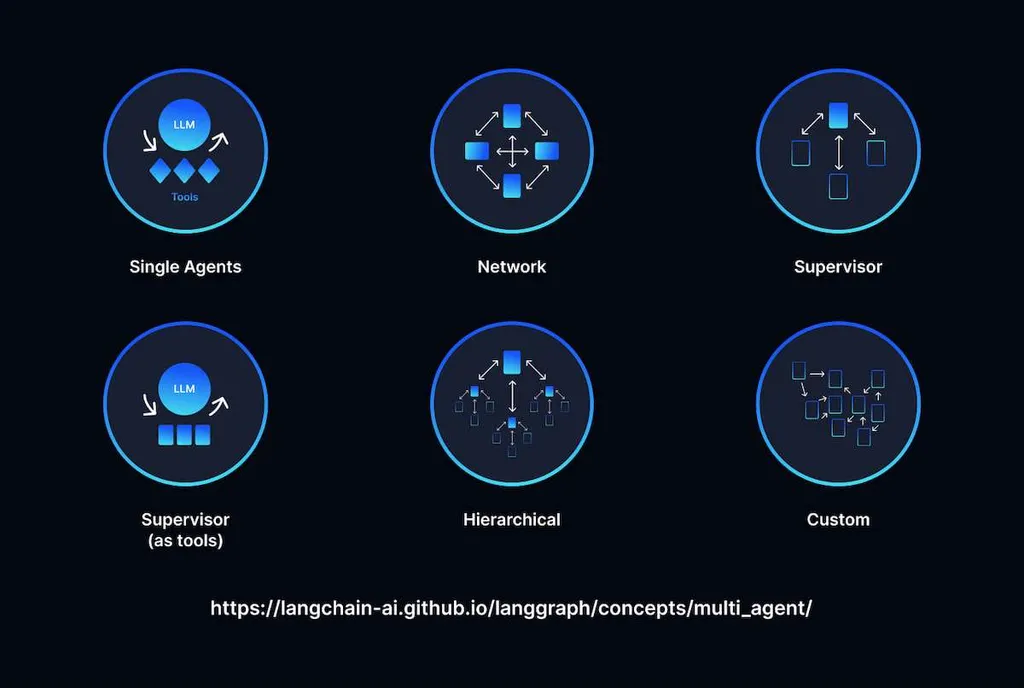AI today isn’t just about one system excelling at a single task. It is becoming a coordinated, team-driven effort. At the core of this evolution are multi-agent systems, which are networks of intelligent components that can observe their environment, educate from it, and act independently.
What makes these systems so powerful is how their units work in sync. Each handles its own role while communicating, making decisions, and adapting in real time. There’s no need for someone to micromanage every move. In the guide, we’ll walk you through what multi-agent systems are and explain the reasons why they’re becoming a key part of modern AI development.

Explaining What is Multi-Agent Systems
MAS is a network of independent, intelligent entities — called agents — that work together (or sometimes against each other) to accomplish tasks. Each makes its own decisions, acts independently, and adapts to whatever’s happening around it. These might include chatbots, robots, or any other device capable of sensing, learning, and acting.
What makes MAS so unique is how agents work together without the need for constant supervision. They handle tasks that are too complex, too fast, or too intricate for a single system to handle alone.
What you should know about their operation is as follows:
- Agents. These are the core players. Each has its own goal, knowledge base, and ability to act. It doesn’t need permission to do something, it just does it.
- Interactions. They don’t work in isolation. Agents share info, make decisions together, negotiate, or occasionally compete, depending on what’s needed.
- Coordination. To avoid chaos, these intelligent entities need to align their actions. Sometimes, they communicate directly; other times, they “read the room” by observing shared environments.
- Collaboration & competition. Some work together to accomplish a common objective. The system must manage negotiation or dispute resolution since others may have competing objectives.
- Distributed problem-solving. MAS are great at breaking down large problems and tackling them in parts. Each agent takes a piece of the puzzle and contributes to the whole picture.
There are also interesting patterns in how agents behave, similar to natural systems like bird flocks or fish schools. Let’s explore them:
- Flock. Agents coordinate like a group in motion. They avoid bumping into each other, stay in sync, and stick together. It’s useful in managing traffic or robotic swarms.
- Swarm. Agents organize themselves without a central controller. It’s efficient, scalable, and one human can manage many agents at once. It’s ideal for tasks such as controlling drone fleets or monitoring large systems with software bots.
MAS helps complex systems stay smart, self-managed, and flexible. It’s already being used in logistics, traveling, medicine, economics, and more, and it’s only getting smarter.
Classification of Multi-Agent Systems
From robotics and logistics to retail and education, multi-agent systems are amplifying how complex tasks are solved across industries. Depending on their design, level of coordination, and the autonomy of individual agents, they can take very different forms. Let’s see how they work with examples.
Cooperative
In such a system, all agents have a common goal. They exchange data to work better together and respond faster to changes.
Example: In a delivery service, smart machines share information about traffic jams to choose better routes. It helps reduce delivery times.
Collaborative
Each agent performs its own task but coordinates with others. It allows complex processes to proceed smoothly and without delays.
Example: In a factory, one robot collects parts, another checks quality, and a third packages. All work is in sync.
Mixed
Some agents cooperate, while others act separately or compete with each other. It gives the system more opportunities to adapt.
Example: In a marketplace, some agents recommend products that you might like. Others change prices to stay more profitable than competitors.
Hierarchical
Agents are divided into levels: some plan, others execute. The structure helps to better organize work.
Example: In a warehouse, the main system decides what to deliver and where. Robots follow the commands to sort and pack the goods.

Why Are Multi-Agent Systems Important?
One AI agent definitely gets a lot done. But when you’ve got a unit of multi-agent AI working collectively, things really start to take off. The agents share info, sync up, and tackle problems together. That’s the power of the systems.
Let’s take a look at a few reasons why the systems are indispensable. They can:
- Manage growing workloads. Whether it’s handling support tickets, managing software pipelines, or monitoring patient data, AI agents keep everything running smoothly.
- Stay agile in fast-changing conditions. Changes are constant in areas like finance, retail, and logistics. Multi-agent systems adjust in real time, helping businesses stay one step ahead.
- Run complex systems. From self-driving vehicles to city-wide traffic control, some systems require thousands of tiny decisions every second. Agents take care of it.
- Keep things stable under pressure. In critical areas like disaster response or power grid management, agents help maintain control and reduce risk.
Such a setup is especially useful when problems are too complex or fast-moving for a single agent to handle alone. Working as a team, agents cover more ground and make smarter decisions faster.
Characteristics of MAS
A core attribute of MAS is autonomy. Each agent operates independently, managing its own workload and adjusting its actions based on its surroundings. Self-governance brings greater flexibility. It allows the system to function efficiently, even in changing environments.
Another notable trait is the system’s ability to handle complex interactions. Rather than simply executing pre-defined commands, agents analyze situations. They learn from them and make informed decisions. The cognitive functionality lets them navigate dynamic scenarios and collectively raise the system’s overall intelligence.
Techniques such as retrieval augmented generation (RAG) further intensify decision-making. RAG lets agents access external knowledge sources in real time. As they retrieve relevant info and integrate it into their reasoning process, agents respond more accurately.
Parallelism is another significant advantage. Multiple agents carry out different tasks at the same time. It accelerates processing and increases system responsiveness.
Finally, MAS is intentionally designed to be open and modular. New units can be added, and existing ones removed or replaced, with minimal disruption. Such a modularity makes the system highly scalable.
Applications of MAS
MAS is already working behind the scenes in ways impacting our everyday lives, and businesses are using them more than you might think.
Let’s start with smart energy grids. Imagine a city’s entire power system adjusting in real time, deciding where to send electricity, when to store it, and how to balance the mix between solar, wind, and traditional sources. That’s what MAS is doing.
In manufacturing, they handle complex operations: machines “talk” to each other, inventory systems self-adjust, and logistics flow without human micromanagement.
Transportation is another area. Ride-sharing apps like Uber or Bolt dispatching the nearest driver is already a form of MAS. Add autonomous vehicles and smart traffic lights to the mix, and you’ve got a full-scale MAS optimizing how people move through cities.
What ties all applications together is the rise of agentic artificial intelligence — systems, where agents make their own decisions based on goals, context, and real-time data. The shift marks a new phase in AI, where autonomy and adaptability play central roles.
Tips for Building Multi-Agent Systems
When building a MAS, make sure agents function reliably, efficiently, and in a way that delivers actual business results. Let’s take a look at a few tips:
- Telemetry, logging, and evaluation help you fine-tune agent behavior and track how well your system responds to real-world inputs. The tools form the feedback loop, which tells you what’s working and what’s not and where performance can be sharpened.
- Interoperability is another crucial factor. In real-world setups, agents often come from different frameworks. Getting them to communicate and coordinate can be tough. So, you need robust protocols and smart design choices. Solutions like MetaDialog help bridge the gap, ensuring your agents speak the same language so your system runs as a single, aligned unit.
- You also need real-time monitoring and performance tuning. Track key metrics, spot slowdowns early, and continually improve how data flows through the system.
- Evaluation and observability also matter, especially when you need to audit or debug. Without transparency into how agents make decisions, you’re flying blind. Full visibility lets you diagnose issues quickly and maintain trust in the system.
All of it contributes to achieving a broader goal: intelligent automation. MAS becomes the engine behind workflows that respond intelligently to changing conditions.
Whether handling help desks or managing processes across an enterprise, MetaDialog helps you. And with custom language models trained on your own data, our system understands your brand. See how MetaDialog can power your customer support: book a demo and explore what intelligent automation feels like.
The Future with AI Multi-Agent Systems
Smarter, more adaptive agents are not only easier to manage but also scale in ways that make a real-world impact possible. AI-powered multi-agent systems help build more responsive infrastructure, improve disaster response, or power next-gen digital services.
Think bigger: intelligent mobility in smart cities, cleaner energy through distributed generation, and personalized healthcare driven by real-time patient data. They’re becoming achievable thanks to the flexible, resilient architecture AI brings to multi-agent setups. It’s a computational backbone that allows big ideas to move from theory to practice.
As we enter a more connected, dynamic world, the systems offer a practical way to grow with resilience in mind. The future isn’t just automated; it’s distributed, responsive, and smarter at every layer. And this future is closer than you think.
In MetaDialog, we aim to keep pace with change and turn complexity into clarity. We help teams move faster, make better decisions, and focus on what truly matters. Start building more intelligent workflows today. Visit MetaDialog to see it in action.
